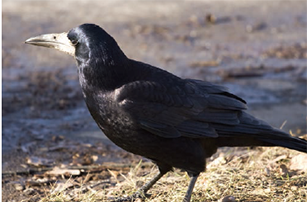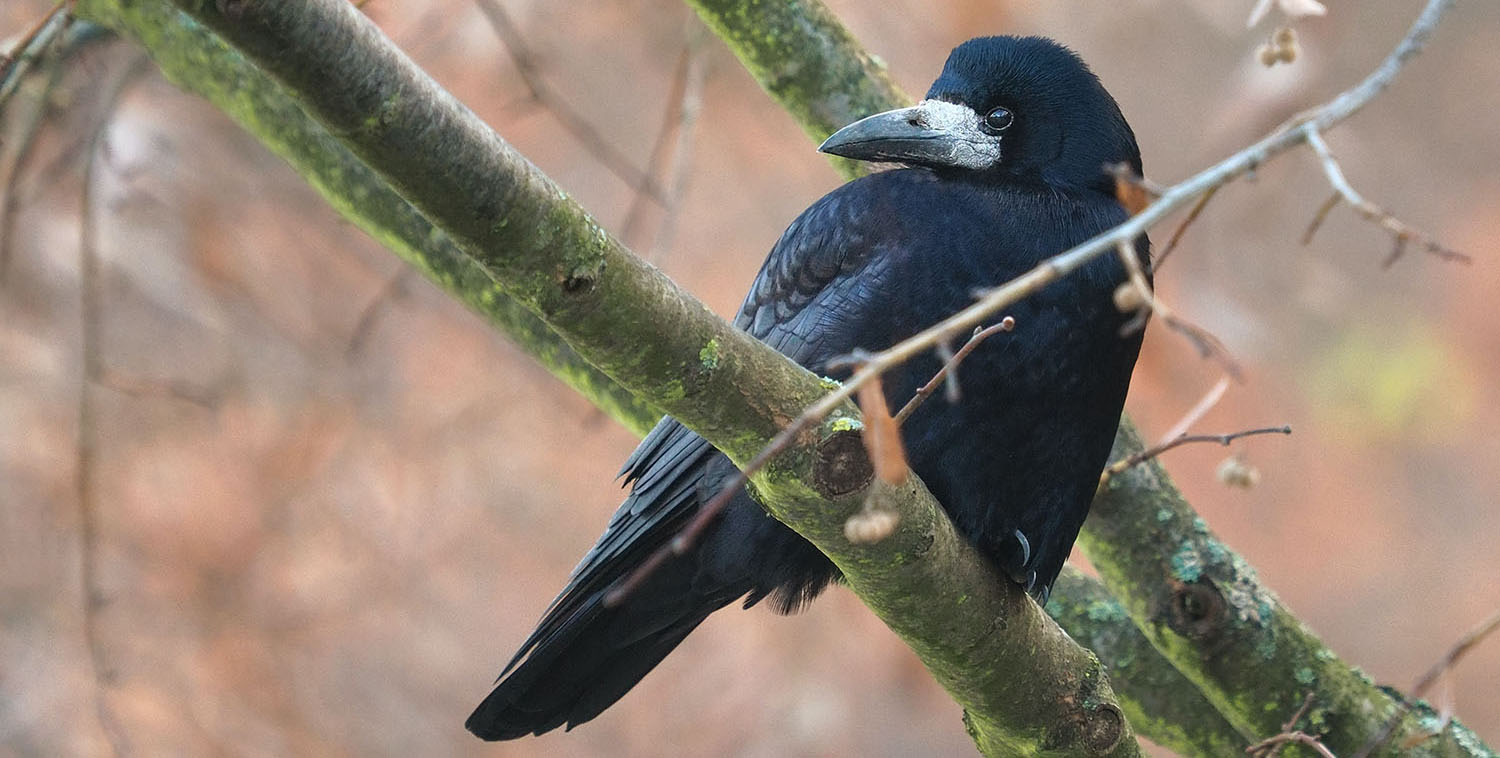| Management programme |
| Eradication |
| Objective |
| To reduce rooks within the Waikato region to zero density where rookeries are found, and to prevent adverse effects and impacts. |
| Impacts |
| Economic, soil resources |
Rooks are large black birds, native to Great Britain and Europe. They were introduced to New Zealand in the 1860s to control insect pests, but instead they threaten farms.
Rooks first became a problem in the Waikato region in the Miranda area in 1968. Waikato Regional Council has been involved in controlling rooks since 2002 and we estimate the rook population in this region is now less than 40 birds.
While it’s good news that the numbers are so low, this makes surveillance and control challenging and we need to get rid of them permanently.

What do they look and sound like?
There are other introduced birds with black plumage in our region like magpies and blackbirds that could be confused with rooks. The table below describes the characteristics of each species to help you distinguish between them.
| Rook | Magpie | Blackbird | |
|---|---|---|---|
| Pest status | Eradication pest – controlled by Waikato Regional Council | Sustained control pest – controlled by occupiers | Not considered a pest in the RPMP. |
| Plumage | Glossy black with a violet-blue tint,white face. | Black or grey with white to grey hind neck and/or back. | Black (male) or dark brown (female). |
| Size (beak to tail end) | 30-50cm long | 35-45cm long | Up to 25cm long. |
| Common call/s | ‘Kaah’. Listen to a rook calling [MP3, 70 KB] |
‘Quardle oodle ardle wardle doodle.’ | Tuneful call. Harsh ‘tchink’if disturbed. |
| Distinguishing feature/s | Greyish skin flap on adult birds reaching from bill to nostrils. Dark grey bill. | White marking on wings and tail. Whitish bill with black tip. | Smaller bird. Bright yellow bill (male), brown bill (female). |
Why are they a pest?
Rooks feed on and damage newly sown crops, particularly cereals, peas, maize and squash. They often pull young plants from the ground to reach the seeds, however, they will eat cereal crops at any stage of growth. Rooks can also damage pasture by tearing it up when searching for grubs, exposing bare soil to erosion, and encouraging weed germination. Rooks in large numbers can devastate emerging crops, sometimes requiring them to be completely resown. In the past, farmers have also had a whole season’s silage damaged by rooks tearing holes in the plastic wrapping.
Rooks can form large breeding colonies, called rookeries, of several hundred birds. In the Waikato they generally build their rookeries in pine or Eucalyptus trees. A typical rookery holds 3-7 nests, equating to 3-35 birds. Adults live in and about the rookery during the breeding season, from early September until mid-December. Outside of this time rooks can forage over 10s of square kilometres, with their distribution and behaviour strongly influenced by the availability of preferred foods.
Report rook sightings
Do not attempt to control rooks yourself unless you are permitted by an authorised person. Do not disturb their nests or approach the rooks as they will move elsewhere. Instead, report all rook sightings to the Waikato Regional Council by calling us (0800 800 401) or by using our rook sighting form.
More information and advice
- For advice and additional information on control methods, call our animal pest staff on freephone 0800 800 401.
- Report any rooks you see on your property by either calling us at the number above or go online and fill in our pest reporting form, on this page.
- Rook | New Zealand Birds Online (nzbirdsonline.org.nz)
- Rook » Pest Detective







To ask for help or report a problem, contact us
Tell us how we can improve the information on this page. (optional)